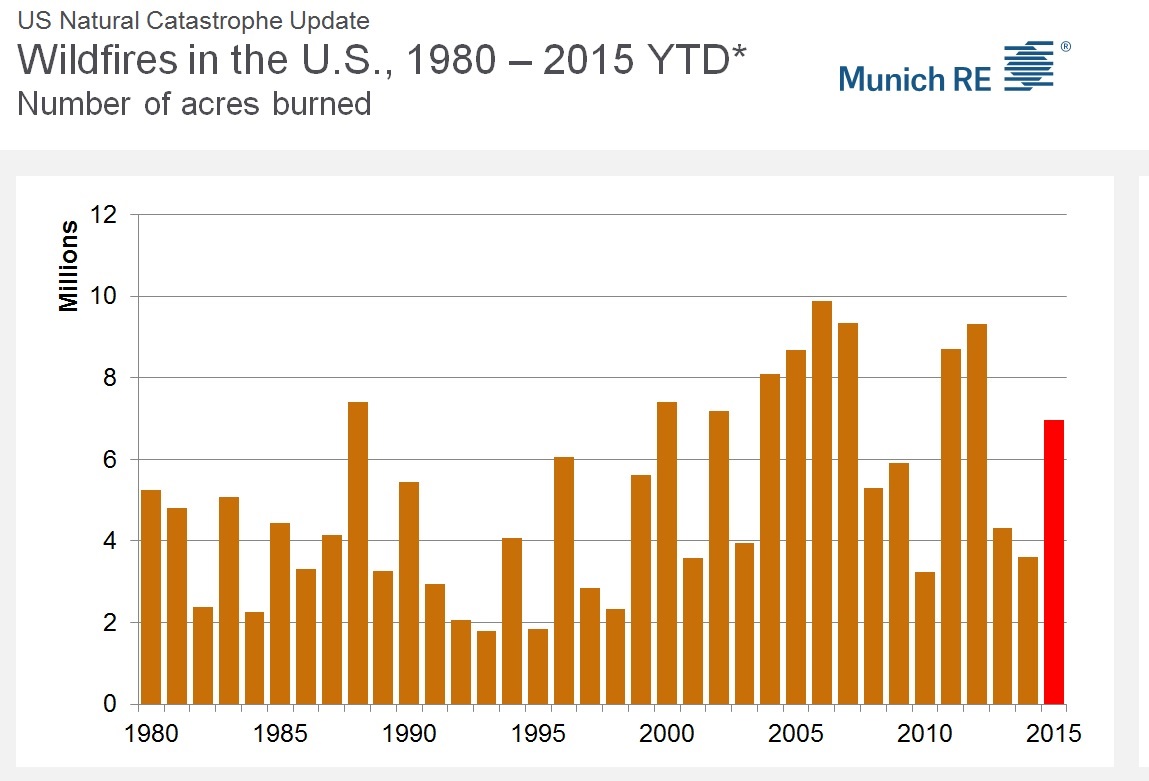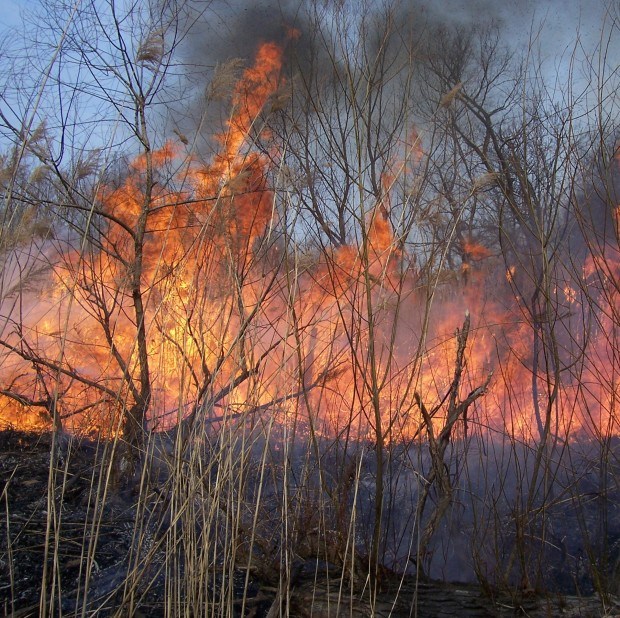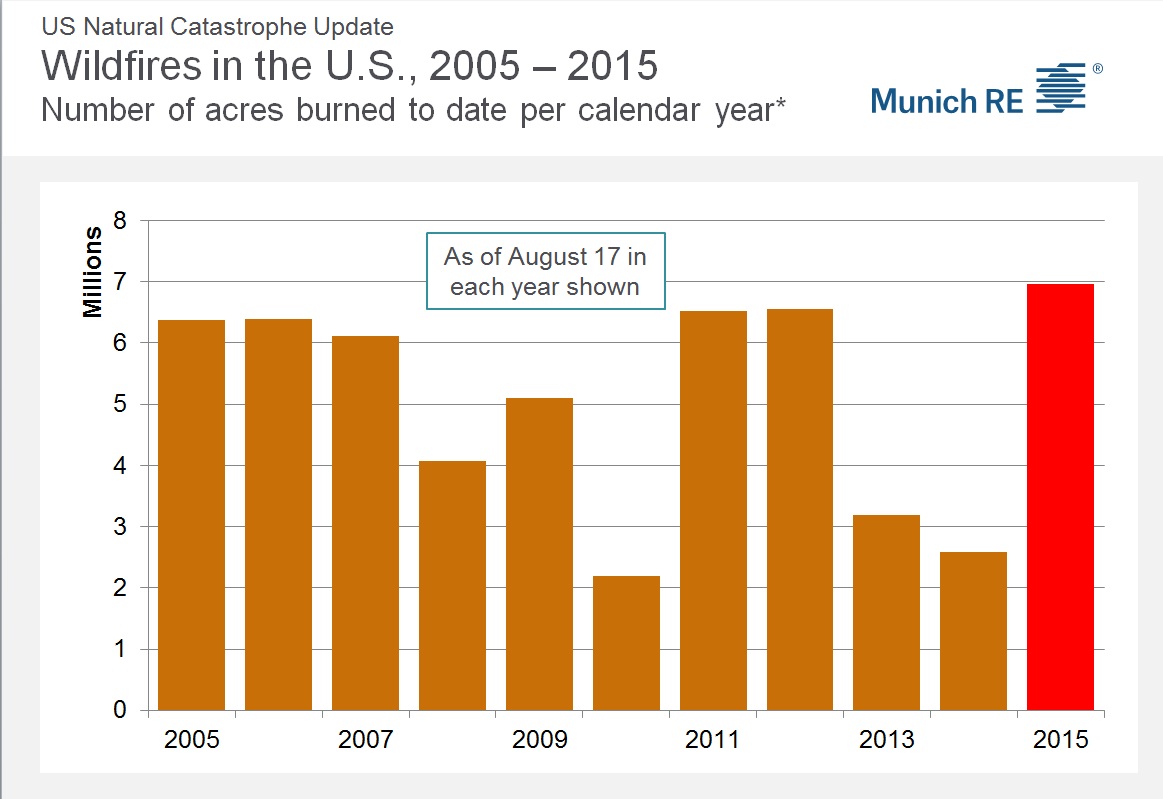When measured in terms of acres burned rather that insured losses, 2015 could go down in the record books as the worst wildfire year, a meteorologist from Munich Re America said last week.
Mark Bove, senior research meteorologist of Munich Re America was among the experts sharing statistics on wildfire damage last week, as fires continued to impact the Pacific Northwest.
According to Bove, wildfires have burned about 7 million acres of land in the United States so far this year, with the majority of the impact occurring over 5 million acres in Alaska.
When compared to the number of acres burned by mid-August over the past 10 years, 2015 is currently the worst wildfire year on record, Bove said in an analysis that Munich Re shared with Carrier Management via email.
Bove noted that peak fire season in the western U.S. is during September and October, which means there is a chance for a new record for acreage burned in 2015.

Still, as of August 17, insured losses have been relatively minor since no major areas of population have come under direct threat yet, Bove said.
Separately, CoreLogic, a global property information, analytics and data-enabled services provider, assessed potential damage from the Chelan wildfire burning in the state of Washington. CoreLogic reported that close to 13,121 homes with a combined reconstruction cost of more than $3 billion were at some level of risk from the fire.
Of that total, 634 homes, or 5 percent, are at “Maximum Risk” or “Moderately High Risk” of damage with a total reconstruction cost of more than $198 million, CoreLogic said.
While the majority of homes, 93 percent, are at “Minimal Risk” of damage, CoreLogic cautioned that wildfire can easily expand to adjacent properties and cause significant damage even if the property is not considered high risk in its own right.

The table above shows the risk levels for all of the homes in the eight ZIP codes impacted based on the CoreLogic Wildfire Risk Score. This score indicates the level of susceptibility to wildfire damage and includes the risk associated with the property being located in close proximity to other high-risk properties or areas. The higher the score, the greater the risk of damage.
The reconstruction cost values represent estimates to rebuild the home, taking into account labor and materials, and are based on 100-percent or total destruction of the residential structure. Depending upon the size of the wildfire, there may be less than 100-percent damage to the residence, which would result in a lower realized reconstruction cost.
Bove, noting that wildfires have primarily occurred in regions with sparse human habitation so far this year, made a similar point. “As the past has shown us, a large fire near an urbanized area has the potential to cause billions of dollars in insured losses,” he said.
Sources: Munich Re America, CoreLogic






















 NOAA Announces Latest AI-Driven Global Weather Models
NOAA Announces Latest AI-Driven Global Weather Models  Why the Middle Market Matters and How Insurers Can Capture It
Why the Middle Market Matters and How Insurers Can Capture It  California Workers Comp Combined Ratio for 2024 Highest in 20-Plus Years
California Workers Comp Combined Ratio for 2024 Highest in 20-Plus Years  Why ‘Good Enough’ Is Killing Insurance: The Hidden Cost of Satisficing
Why ‘Good Enough’ Is Killing Insurance: The Hidden Cost of Satisficing 




